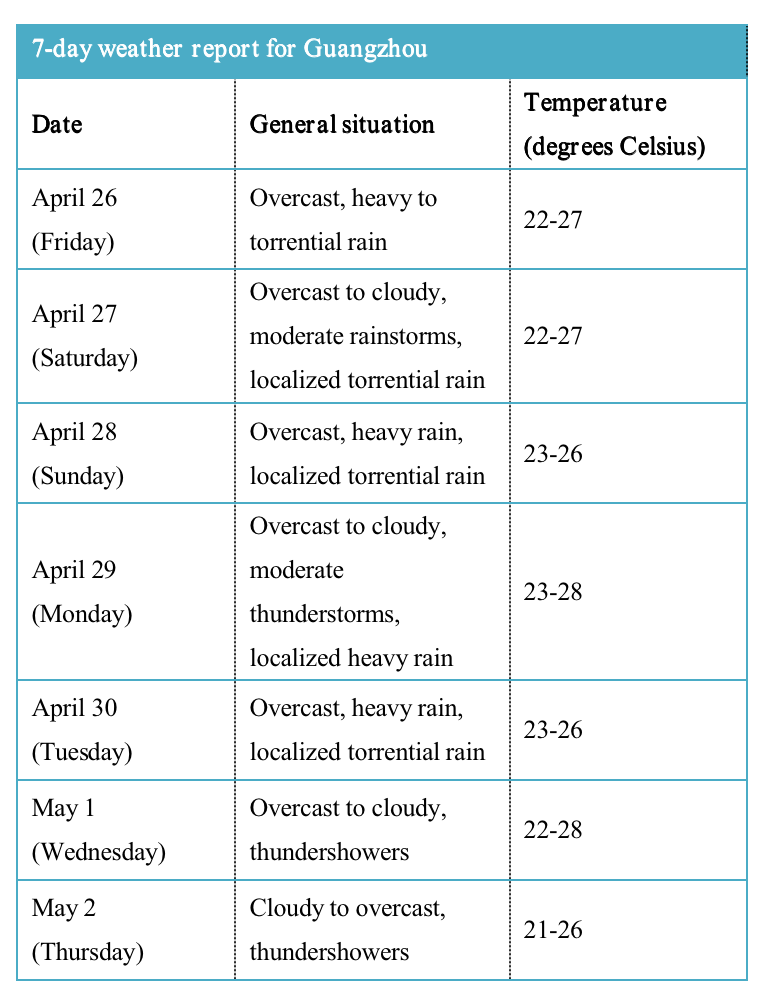Significant precipitation is still expected in Guangdong from April 26 to 28, according to the Guangdong Meteorological Service.
It is predicted that on April 26, under the influence of the upper-level trough and shear line, there will be heavy rain and locally severe rain in the southern part of northern Guangdong, the Pearl River Delta, and eastern Guangdong, accompanied by thunderstorms, gale-force winds, and hailstones.
The frequent heavy rain has also caused significant rises in the water levels of the Beijiang and Xijiang rivers. It is expected that the Pearl River's Guangzhou section will reach its highest tide level for the year so far around 14:50 on April 26.

(Photo: Nanfang Daily)
On April 27, there will be moderate to heavy rain with localized torrential rain in northern Guangdong and the Pearl River Delta. Showers and moderate rain are likely to hit western Guangdong.
On April 28, heavy to severe rain is forecasted for the southern regions of northern Guangdong and the majority of the Pearl River Delta, while the Leizhou Peninsula will see cloudy skies with scattered thunderstorms. Other areas are expected to receive moderate to heavy rain with localized intense downpours.
The meteorological department predicts that Guangdong may still face rainy weather during the May Day holiday.
According to Zheng Zhihai, chief forecaster at the National Meteorological Center, "There is a clear relationship between this precipitation and El Niño." He explained that, on the one hand, against the background of global warming, temperatures in South China are significantly higher than usual, which increases the atmospheric water content and enhances convective intensity, leading to an increase in heavy precipitation events.
On the other hand, affected by El Niño, the western Pacific subtropical high has been continuously strong since April, guiding water vapor from the South China Sea and the Bay of Bengal to be transported continuously to South China, providing abundant water vapor earlier than usual. Coupled with circulation anomalies in the Qinghai-Tibet Plateau and South China, this has formed multiple strong precipitation processes.

Reporter | Abby
Editor | Steven, James
















